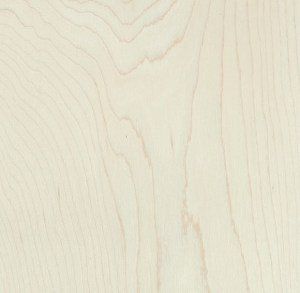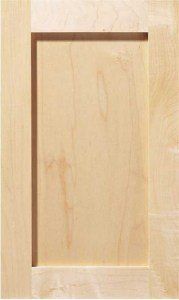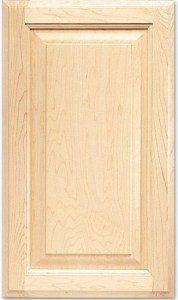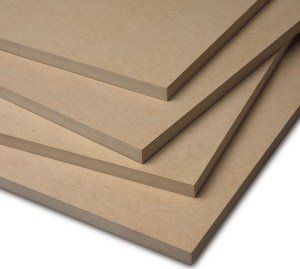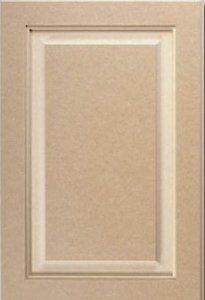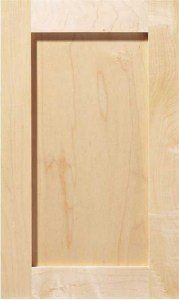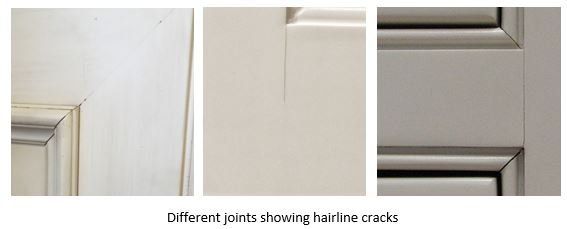Solid Wood vs. MDF
Why is it that more and more cabinet manufacturers are including medium-density fiberboard (MDF) as part of their material selection for painted cabinet doors? When we talk about cabinet doors, MDF is often viewed as an inexpensive alternative to woods. However, both solid woods and MDFs have advantages and disadvantages when it comes to cabinetry.
When we opt for solid woods, we feel attracted to the wood species’ unique characteristics. Some species have deep, variant grains that, when stained, present a unique look. Some have more subtle grains whereas others have grains that are circular in pattern. Some wood species are more porous, which allows them to absorb the stain well and creates a smooth, uniform surface. Others can allow stain to dry on the surface and create blotchy effects that can look weathered or old-world. For those of us who like to incorporate these unique features into our aesthetical concepts, solid woods are a great choice for cabinet doors.
If you flip through a brochure for any cabinet manufacturer, you will see that stains are not the only finish option. Opaque lacquer (AKA paint) is also presented as an option. Typically, in white and off-white and in many shades of gray, charcoal, and even black. When we opt for painted cabinet doors, manufacturers often paint doors that are constructed in maple. This is because of the non-porous nature of maple. As opposed to a porous cherry wood, for example, which soaks up the stain for a consistent look, a non-porous maple surface works better for the application of paint by allowing it to dry on the surface to create the opaque finish. The very subtle grain of maple also makes it the right choice by minimizing the grain bleeding through the paint.
MDFs are made of sawdust and resin, which acts as the binding agent. When they are compressed with pressure and heated into a sheet, the result is a very strong, stable, and smooth product. Since a very smooth, non-porous surface is desired for paint, MDF is a good choice for the paint application.
Cabinetry doors are typically constructed of rails, styles, and a center panel. We call this a 5-piece construction. Different types of joinery can be used to connect the rails and styles depending on the door style. The center panel is held in place, floating, to accommodate the solid wood expansion and contraction that could result with temperature and humidity change. The expansion and contraction can be visible at the door joint lines in hairline cracks. The movement however becomes more apparent on opaque painted finishes.
Given technological advancement, manufacturers are now able to rout MDFs and shape them the same way they rout solid woods. This makes MDF a desirable alternative to solid woods when it comes to painted finishes. MDF, as an engineered wood, is more stable in nature than solid woods because of the binding agent in its makeup that is cured under high pressure and heat. When paint is applied to doors that are made of MDF, the hairline cracks are visibly reduced due to the reduction in expansion and contraction of the door.
Cabinetry doors can be as simple as a flat/slab door or as detailed as a 9-piece door with heavy, applied moldings. The more detailed the door is, the higher the price tag. When we compare the cost of MDF doors to solid wood doors, we are comparing not only the cost of the material but also the amount of time and effort spent to manufacture the door. A simple MDF door that is painted will naturally cost less than a wood door. A solid wood door when compared to a more elaborate MDF door can cost less. Therefore, it is not fair to generalize MDF as always a cheaper alternative to solid woods.
Solid woods or MDFs both can be great choices based on the type of finish and the aesthetic style. MDFs can have smooth surfaces and can be stable, but they lack the natural characteristics of solid woods. In return, they provide the desired surface and longevity for paint applications.
WHO WE ARE. WHAT WE DO.
Traditional, Transitional, Modern, Classic, Contemporary, Rustic, Mission
ANY STYLE • NO LIMITATIONS
CONTACT INFORMATION
Executive Kitchens, Inc
32314 Woodward Avenue, Royal Oak, MI 48073a

